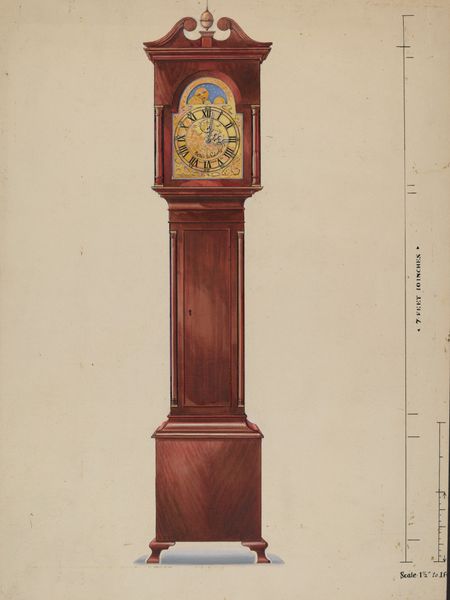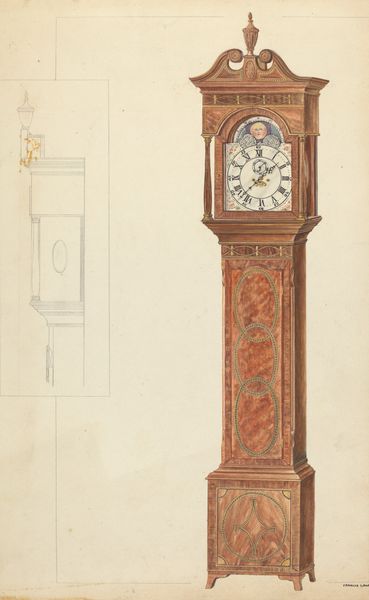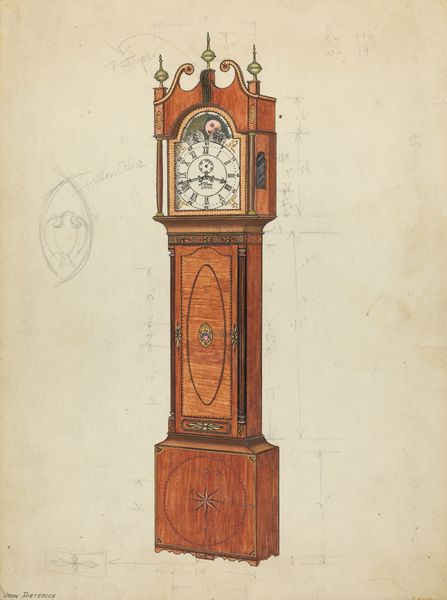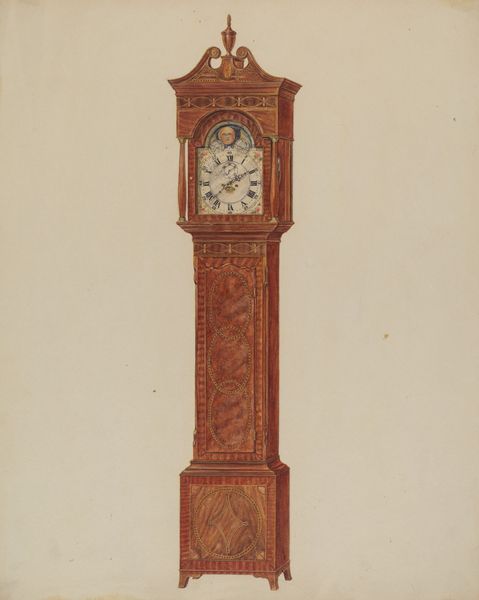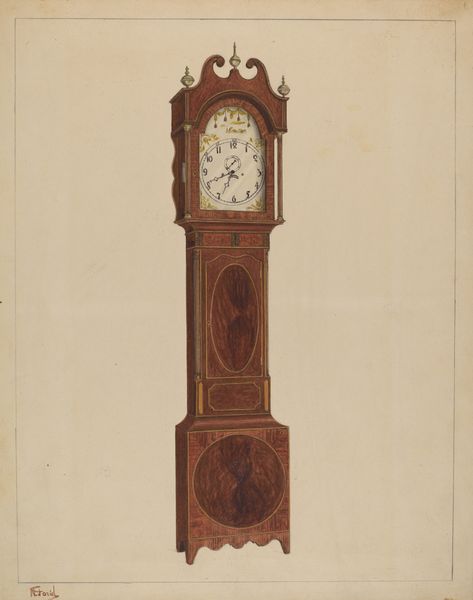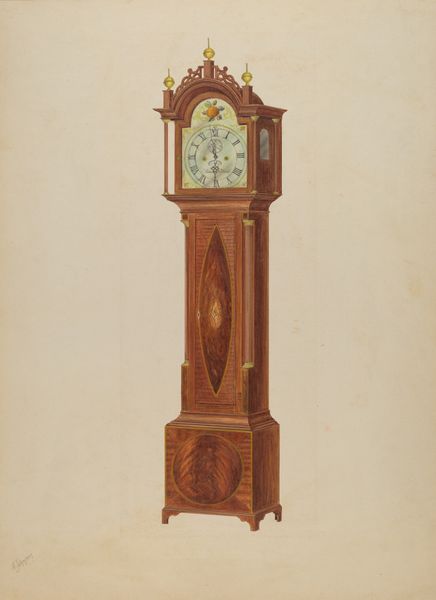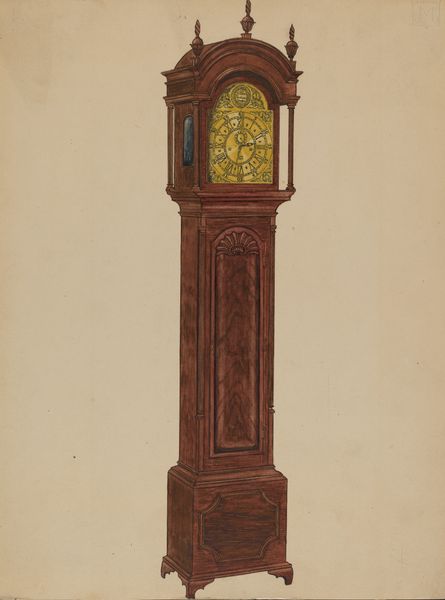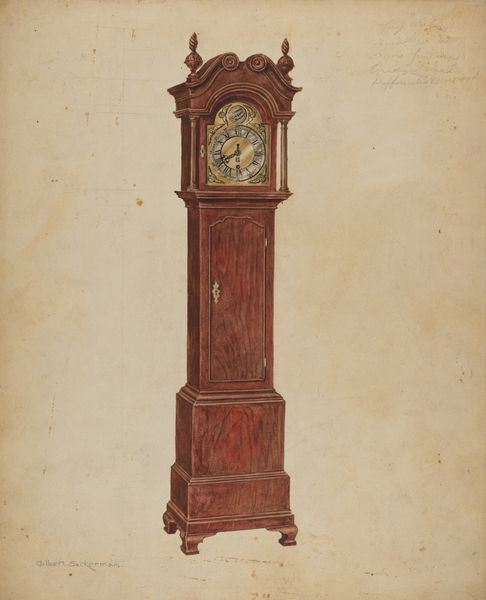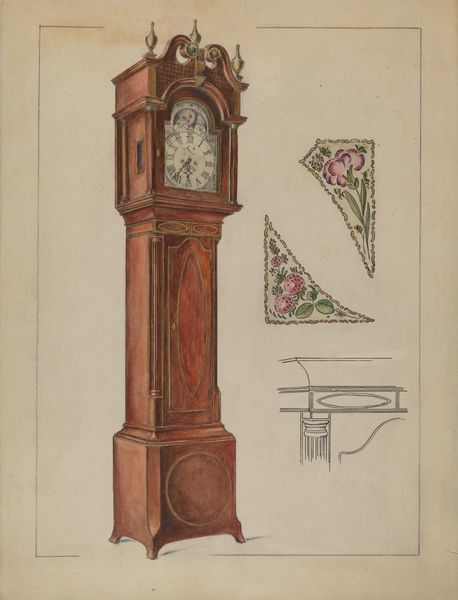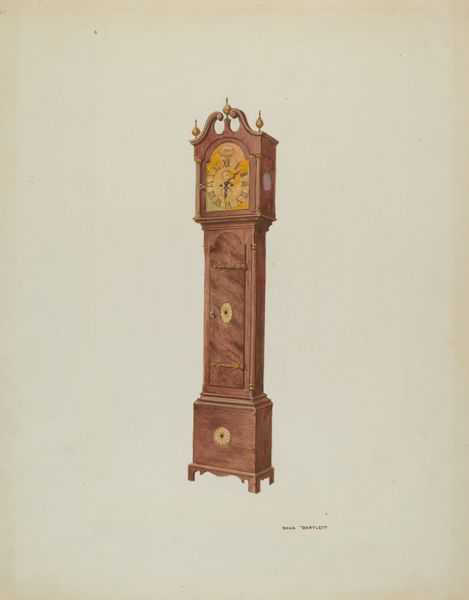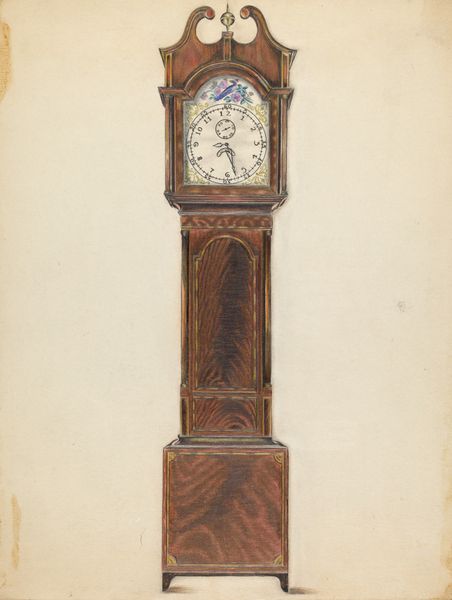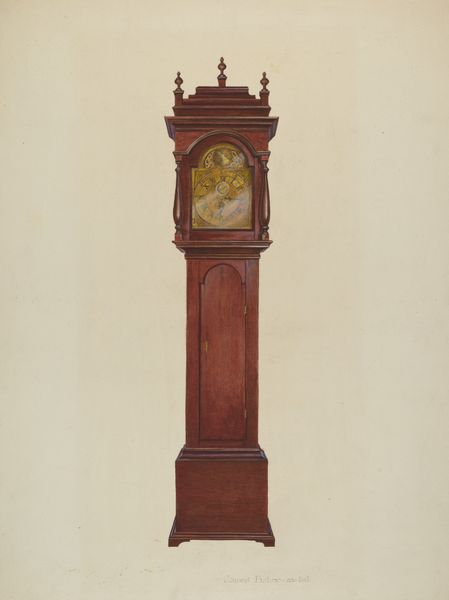
drawing, paper, watercolor
#
drawing
#
aged paper
#
toned paper
#
light pencil work
#
pastel soft colours
#
muted colour palette
#
light earthy tone
#
paper
#
watercolor
#
brown and beige
#
underpainting
#
watercolour illustration
#
decorative-art
#
watercolor
Dimensions: overall: 35.5 x 28 cm (14 x 11 in.) Original IAD Object: Maximum width 21 3/8". (Height on data sh. appears to be incorrect.)
Copyright: National Gallery of Art: CC0 1.0
Curator: I'm struck by the stillness, a sense of quietude that emanates from this watercolor. There's almost a ghostly quality to it. Editor: We're looking at Francis Law Durand's "Grandfather's Clock (Timepiece)," dating from around 1937. It’s a beautiful example of decorative art rendered in watercolor and drawing, a study on paper, really. Notice the spare technical drawing included on the top left of the sheet. It feels more than representational, almost architectural in its purpose. Curator: The muted colour palette definitely contributes to that feeling. Brown and beige underpinnings with those muted earthy tones feel both comfortable and aged. But something about the choice to use such delicate medium to illustrate something so concrete is fascinating to me. Why use soft colour on something so imposing and ridged like a grandfather clock? Editor: Perhaps the softness reflects how we experience time, even though we mark its passing with rigid structures like clocks. In Durand's time, decorative arts often bridged the gap between fine art and craft, imbuing everyday objects with aesthetic value. Consider who the decorative arts serve—it seems clear that they served those of means, those who could afford to bring craft objects like grandfather clocks into their home. How does the representation of something domestic create or reflect wealth? Curator: That’s a thought-provoking angle, thinking about access and class implications in representations of timekeeping. Clocks are time, time is labor, labor creates value. This piece subtly embodies all of that. Also, while there’s so much to the body of the clock, its internal mechanisms are completely invisible, obscured within that structure. The artifice and luxury presented completely overrides how this technology even functions. Editor: I agree. The exterior flourishes become a representation of time rather than its true accounting. The clock face, ornamented with a splash of floral illustrations, softens what might otherwise be perceived as a purely functional instrument. But, in its essence, doesn't art always ask us to consider function beyond utility? What this means for questions of labour feels relevant in considering an audience still experiencing the impact of the Great Depression at the time of its making. Curator: Seeing it that way, it's not just about telling time; it's about marking status, aspirations, and maybe a subtle commentary on the facade of stability. Editor: Precisely. Durand gives us more than a timepiece; he gives us a meditation on time, class, and representation. It also brings to light what something so ornamental does to how its original owner perceived labour, which I find immensely fascinating to continue considering.
Comments
No comments
Be the first to comment and join the conversation on the ultimate creative platform.

